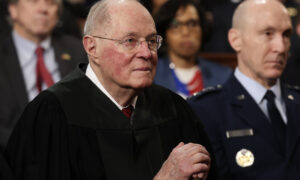The six years of Donald Trump’s federal tax returns, which were made public on Friday, reveal, among other things, that the former president claimed sizable losses that reduced his tax burden and paid very little in federal income taxes during his first and final years in office.
The House Ways and Means Committee disclosed the returns to the public on Friday, capping a legal struggle over their release that reached the Supreme Court. The returns had been long cloaked in secret. They support a Joint Committee on Taxation finding that Trump carried forward sizable losses from before and throughout his presidency in order to substantially lower or eliminate his tax liability. For instance, according to his tax forms, he carried over losses of $105 million in 2015 and $73 million in 2016.
Trump’s personal and business federal tax returns, which covered the years 2015 through 2020, totaled thousands of pages and provided a complex web of raw data about his finances. These returns raise numerous questions about Trump’s wealth and income that could be investigated by auditors and Trump’s political rivals.
After a protracted legal struggle, the results were only just made available to the Democratic-controlled committee. The committee decided last week to release the tax returns, but this was postponed so that Social Security numbers and other private data could be redacted.
The disclosure of the tax returns comes after a protracted search for records that previous US presidents had routinely made available willingly. Trump and his legal team fought tirelessly to keep his tax returns a secret, claiming that Congress had never used its legal authority to request a president’s tax returns, which Trump claimed may have significant ramifications.
Following the publication, Trump issued a statement in which he said, “The Democrats should have never done it, the Supreme Court should have never authorised it, and it’s going to lead to bad things for so many people.”
“The ‘Trump’ tax returns once again demonstrate how gloriously successful I have been and how I was able to use depreciation and several other tax deductions as an incentive for producing thousands of jobs and gorgeous buildings and enterprises.”
Taxes provide insight into dubious tax claims.
The former president made a number of claims that auditors may contest, according to Trump’s returns.
Trump claimed a number of dubious items on his tax returns, including eyebrow-raising amounts of interest he claims to have earned from loans to his children, which the bipartisan committee said could indicate Trump was hiding presents.
The JCT recommended that an auditor should look at the loan agreements Trump signed with his children, particularly the interest rates, even though it made no claims that Trump should have paid more or less in taxes during the years it examined. For example, if the interest Trump claims to have charged his children was not at market rate, it might be deemed a gift for tax reasons and subject Trump to a higher tax rate.
For instance, in 2017, Trump asserted that the interest he paid on a loan he allegedly granted to his daughter Ivanka Trump was exactly $18,000. He stated that his son Donald Trump Jr. owed him $8,715 in interest, and his son Eric owed him exactly $24,000.
That raises the question of whether “the loans were bona fide arm’s length transactions, or whether the transfers were disguised gifts that could trigger gift tax and a disallowance of interest deductions by the related borrowers,” the JCT said in its report.
“It’s unusual to have interest in round numbers – very rare,” said Martin Sheil, former supervisory special agent for IRS’ Criminal Investigation unit. “Payments, loan agreements, and interest rates would be requested by an auditor.”
There are also questions about Trump’s returns listing an identical amount of company expenses and profits.
For example, in 2017, Trump claimed his business DJT Aerospace LLC, which operates Trump’s personal helicopter, claimed $42,965 in profit. It also listed expenses for the exact same sum, $42,965. In other words, every single dollar – to the dollar – that the company earned was negated by the company’s expenses, such as payroll, fuel and other items. That left the company with zero income – and nothing to tax.
“Total expenses equaling total income is a statistical impossibility,” said Shiel. It simply doesn’t occur.
Similar queries were posed by the JCT in its report. For example, it noted IRS auditors were investigating multiple so-called large unusual questionable items on Trump’s tax returns for which the regulator wanted Trump to provide supporting evidence to back up his claims.
Although the newly released tax returns will not indicate Trump’s net worth or the full extent of his financial dealings, they can offer a window into his businesses’ profits and losses, whether and where he has foreign bank accounts or whether he has paid tax to foreign governments.









